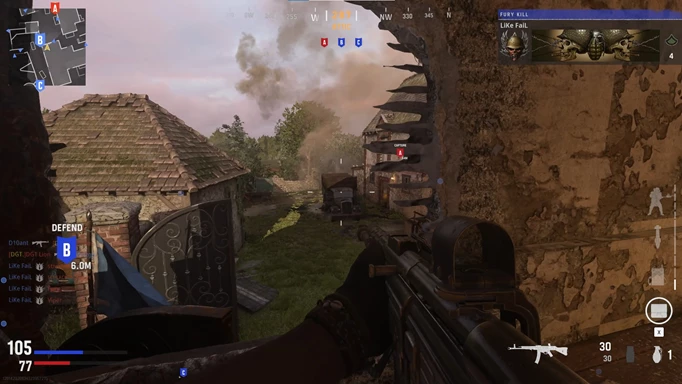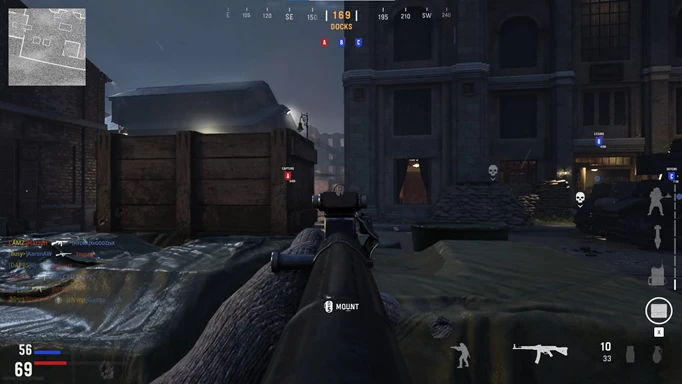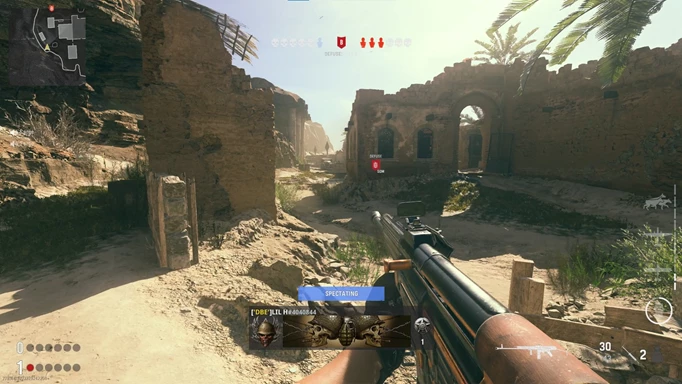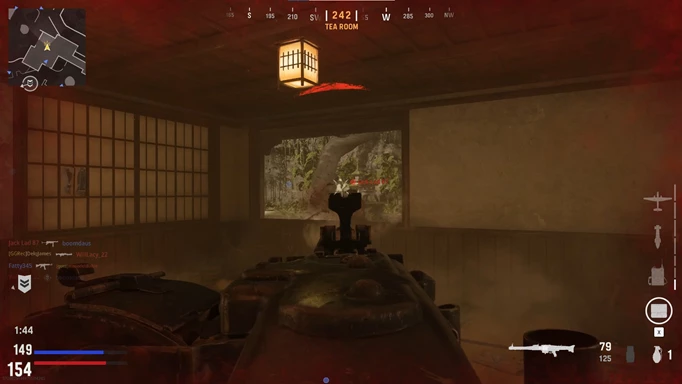Call Of Duty Vanguard Multiplayer Review: "The Perfect Stepping Stone To Be Built Upon"

For years, the Call of Duty franchise has been divided by a riverbed, ebbing and flowing, ripping the loyal fan base into two divisions: die-hard esports fanatics and the average casual player. Whilst the isolated fan bases have both survived, only one side has benefited from the microtransaction-focused games built with a battle royale in mind. With the casual camp on one side and the esports enthusiasts on the other, the disparity between the two is getting wider every year.
However, Call of Duty Vanguard has laid the foundations for a bridge to bring together the entire community. For a title that was originally destined to be a boring stop-gap between two behemoth sub-franchises, Vanguard is pushing the limits of Call of Duty multiplayer, throwing caution to the wind on a saturated WWII setting, and finally starting the erection of the much-needed esports bridge.
- Take a look at the Vanguard best guns list if you're unsure which weapons to be running
A Multiplayer Masterclass


The return to the infamous IW engine is a blessing for Call of Duty Vanguard. With an emphasis on extremely smooth dynamic movement mechanics and seamless transitions in the gunplay, the IW 8.0 engine has taken the highly-praised Modern Warfare gameplay and embedded it into a fully reactive landscape. The engine rids any unnatural movements from the gameplay, allowing you to feel like the weapon you’re wielding is in your hands, rather than the controller – as close to a VR response as you could imagine. Whether it be a sniper or a rifle, the engine mimics the real life aiming of a weapon and the recoil patterns of a variety of “old school” guns. Most weapons come with a strong kick before unlocking the masterful attachments, rather than the robotic futuristic blasters that feel abnormal, which makes the gunplay in Vanguard realistic, entertaining, and rewardingly difficult.
Returning to a World War 2 setting was a gamble, having seen Call of Duty WW2 get heavily criticised as “clunky” and “standard”, especially being compared to the pre-jetpack era titles of the same conflict. However, implementing the “four fronts” of WWII has breathed a new light into the genre that was previously littered with a dull sepia glace, with maps set in landscapes such as Castle (a Japanese Dojo), Oasis (an Egyptian canyon), and Decoy (a picturesque farmland) seeing a different side to the second World War that has yet to be depicted on a multiplayer scale. Complimenting Sledgehammer’s bravery for revisiting the theme, most maps orientate around the three-laned design that has become a devoted method of success. On the larger-scale maps, Vanguard is absurdly vertical though, which is one of its major downfalls if you’re looking to get practice in on a new setting. Maps like Numa Numa, Sub Pens, and Demyansk disregard the fundamental design and toy with a new vertical style where snipers have access to the whole arena.
The more typical 6v6 maps are glorious though and will likely become nostalgic memories in years to come. With many swift two-floored maps that benefit the boots on the floor combat that Call of Duty fans love, the small-based designs are perfect for skirmishing through tight-knit houses and finding outside angles with an Assault Rifle, all without any question of “where did I just get killed from?” In Vanguard, the map is your own, and you can quickly learn the choke points where the action is at – poetic chaos.
- Playing on PC? Check out our guide to the best Vanguard PC settings to improve your performance
With the introduction of destructible environments, many feared Vanguard will stray from the Call of Duty ‘feel’, having been more prevalent in the likes of Battlefield. However, the photorealistic reactive elements of most of Vanguard’s maps offer an instinctive and immersive feeling, rather than the copy-and-paste Black Ops Cold War reskins that had you feeling like a chess piece floating around a pre-made board. What Vanguard does well is make the multiplayer experience have a sprinkle of destruction that doesn’t break the game, amid fears that objective-based game modes could turn into the over-tactical Rainbow Six: Siege.
Strong Foundations


Unlike the Modern Warfare era though, a range of guns appear as viable options for competitive play, much thanks to the inordinate number of customisation options. Whilst some players prefer the old “Pick Ten” loadout system, having the same number of options for a single weapon allows for a unique experience tailored towards each individual, rather than having every player run the same weapons. With a clear indication that the meta will shift throughout the year, the original weapon set has already enabled multiple weapons in each category to become feasible at the upper echelon of gameplay. As per the usual four-man layout of the CDL scene, the varied gunplay can license a range of team compositions, such as the return of a dedicated flex main on a short-range Assault Rifle, and the adaptive Sniper Rifles being reintroduced on Search and Destroy.
Call of Duty Vanguard has also introduced “bloom” as a way of balancing their gunplay, which is a touch of genius to balance the meta. The previous seasons have been plagued with Submachine Guns that can shoot across the map just like an Assault Rifle, lowering the skill gap between the two roles in a competitive standpoint. However, Sledgehammer Games has sprinkled its brilliance on the meta to create significant gaps between close, mid, and long-range weapons. Having been inspired from the likes of Fortnite, bloom results in SMGs suffering from a lack of accuracy at extensive distances, where bullets imitate a hip-fire spread when aiming down sights, allowing the surging led pellets to be less accurate at longer ranges. The method is perfect for competitive Call of Duty, allowing ARs and flex players to blossom while adding more prevalence on the timing and movement of SMG players. Having been the first developers in the franchise’s history to add this in, the CDL will be thankful, hoping it will be a method that will stick throughout the next chapters.
The developers have also added a Call of Duty League hub, straight off the bat, which is the first of its kind for all players to access the esports scene. The in-game pop-up displays schedules, fixtures, results, and news, perfectly outlining the intentions to push the professional scene to the millions of eyes that play the casual side of the game.
- Wondering what the locales are like in multiplayer? Check out the full list of Vanguard maps
More Bricks Need To Be Laid

 Click to enlarge
Click to enlargeVanguard is far from the polished article though, for a well-rounded competitive titan. The foundations have been laid, but the pathway to the esports ranks is not yet carved out, unless you’re already looking for it.
Whilst the root multiplayer experience is enhanced by the destructive elements, a large majority of the adaptive environments aren’t reflected in the Call of Duty League private match settings – the inevitable ruleset for the esports competitions. As Call of Duty Vanguard excels with its elemental dynamic for the usual multiplayer experience, having to turn off these features for competitive only makes the bridge that they’ve started to build grow even wider. For a player looking to make the step from casual to competitive, many of Vanguard’s intuitive principles must be un-learnt, or stripped back to their basics, in order to exceed in the soon-to-be-introduced ranked play.
Notorious for their elo ranked system in WW2, Sledgehammer has confirmed its ranked system will follow post-launch, which will be a step in the right direction. However, the blaringly obvious omission to unify the two camps is a dedicated multiplayer gamemode where destructive elements are also turned off, acting as a ranked placeholder.
The further dagger in the side of esports is the clear momentum swing by the developers to favour larger multiscale battles, typical of the WW2 nature. With large maps that boast a lot of vertical warfare, suitable for 10v10 and 16v16 fights, there’s a clear push for Vanguard to move away from a tactical bout that is most seen in the 4v4 CDL Search and Destroy rounds. Although certain maps are best played out on the “Assault” variant (6v6), many of the repetitive maps on the public playlists become redundant when played at a competitive level, due to their size and verticality. You can instantly discard the likes of Sub Pens and Demyansk, which implement that archetypal Battlefield style of ‘anything goes’, whilst Shipment and Dome are no-goes for competitive, no matter how few players are in the slaughterhouse. Even the popular Castle remake is best played on a large scale, making it go from one of the most popular multiplayer maps to a non-viable competitive battleground. It’s clear the likes of Bocage and Tuscan were designed specifically for an esports playlist, but their popularity is less than favourable on the voluminous mainstream playlists – further widening that riverbed between the juxtaposed fan bases.
- Mastery camos are back, so have a read of everything you need to know about the Vanguard Atomic camo
Perfect Foundations For Esports

 Click to enlarge
Click to enlargeCall of Duty Vanguard is an exemplary multiplayer masterclass that bathes in chaos, creativity, and tactical prowess. It has all the making of a truly great esports title, backing the CDL and the competitive community, which will likely create a hugely entertaining season of gameplay emulated in the upcoming ranked playlists by their fans and aspiring talents – the omission of which is unforgiveable from an esports perspective. Whilst the foundations have been laid though, it comes as a year too soon for a full pathway between casual and competitive, although it’s the perfect stepping stone to be built upon. For a title with miniscule hope, Call of Duty Vanguard could go down as the game that revived esports, soon to be a game that we reflect upon as one of the greats.
4/5
Reviewed on PS5. Code provided by the publisher.